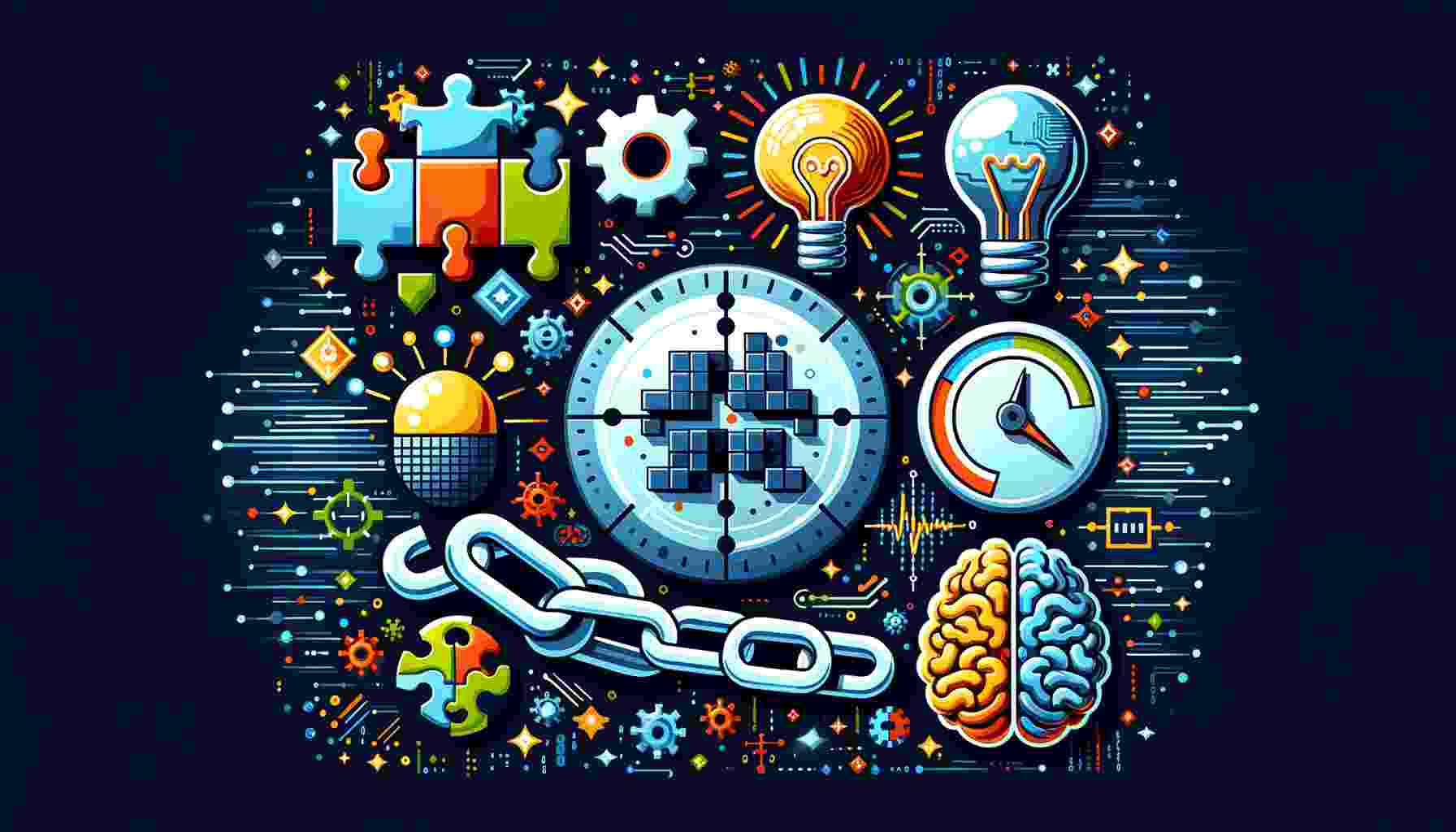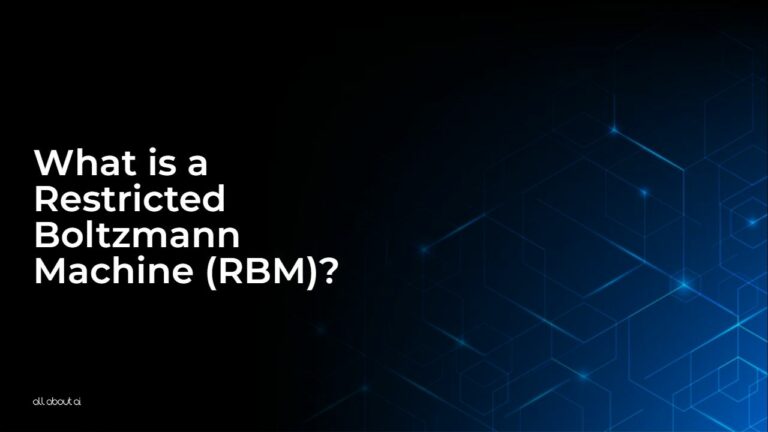What is a Restricted Boltzmann Machine (RBM)? They are a specialized type of artificial neural network that have evolved from the general Boltzmann machines, carving out a significant niche in machine learning and AI.
Looking to learn more about RBMs and their use in AI? Keep reading this article written by the AI enthusiasts at All About AI.
Have you ever heard of a Restricted Boltzmann Machine (RBM)? It’s like a smart robot brain, a bit different from the usual ones. Imagine a bunch of tiny brain helpers working together in a team. They are special because they come from a big family of robot brains called Boltzmann machines. But these RBM brains have their own unique way of doing things. They are really important for learning new stuff in the world of smart machines and AI, which is like teaching robots to think and learn.What is a Restricted Boltzmann Machine (RBM)? Adventures in AI Brainland
How Do Restricted Boltzmann Machines Function?
Here’s a brief overview of how Restricted Boltzmann Machines function.
Step 1: Initial Setup with Two Layers
RBMs start with two distinct layers: the visible layer, which is the entry point for input data, and the hidden layer, responsible for feature detection. These layers are interconnected, but there are no connections within a single layer.
Step 2: Data Processing Through the Visible Layer
Input data is fed into the visible layer. Each neuron in this layer represents one feature of the input data, like a pixel in an image or a word in text data.
Step 3: Feature Detection in the Hidden Layer
The data from the visible layer is then passed to the hidden layer. Here, the RBM starts to recognize patterns and features in the input data, which are not explicitly labeled.
Step 4: Learning the Data Distribution
During training, the RBM adjusts the weights of the connections between the visible and hidden layers. This process helps the model learn the probability distribution of the input data.
Step 5: Reconstruction of Input Data
Finally, the RBM attempts to reconstruct the input data based on the patterns it has learned. This step is crucial in evaluating the accuracy and efficiency of the RBM.
What Are the Key Benefits of Using Restricted Boltzmann Machines?

This section of the article will delve into the benefits of these machines, emphasizing the reasons behind the popularity of RBMs in certain artificial intelligence applications.
- Efficient Feature Learning: RBMs can automatically discover and learn intricate patterns and correlations within large datasets without supervision.
- Handling Missing Data: RBMs are capable of dealing with incomplete datasets, making predictions about missing data based on learned patterns.
- Flexibility in Applications: Due to their structure, RBMs are versatile and can be applied in various fields, from image processing to recommendation systems.
- Enhanced Deep Learning Models: RBMs serve as building blocks for more complex deep learning architectures, such as Deep Belief Networks.
- Probabilistic Modeling: They excel in probabilistic modeling, allowing them to handle uncertainty and variability in data efficiently.
What Challenges Arise When Implementing RBMs?
Despite their numerous advantages, implementing RBMs is not without its challenges.
Training Complexity
Training RBMs can be complex and time-consuming. Properly tuning parameters like learning rates and the number of hidden layers is crucial for optimal performance.
Data Sparsity
RBMs might struggle with sparse datasets. In cases where the input data contains a lot of zeros or missing values, RBMs might not learn effectively.
Risk of Overfitting
Like many machine learning models, RBMs are prone to overfitting, especially when trained on small datasets or for too long.
Scalability Issues
Scaling RBMs for large and complex datasets can be challenging. As the size of the data increases, the computational resources required also increase significantly.
Dependency on Quality of Data
The performance of RBMs is heavily reliant on the quality of the input data. Poorly preprocessed data can lead to suboptimal learning and pattern recognition.
Where Are RBMs Effectively Applied in AI?
The application of RBMs spans a diverse array of AI fields. These include:
Image Processing and Recognition
RBMs are widely used in image processing for tasks like image recognition and classification, capitalizing on their ability to detect complex patterns in visual data.
Natural Language Processing
In natural language processing, RBMs help in understanding and generating language patterns, significantly contributing to machine translation, text generation, and sentiment analysis.
Recommendation Systems
Leveraging their feature learning capabilities, RBMs are effective in building recommendation systems, predicting user preferences based on past interactions.
Collaborative Filtering
RBMs excel in collaborative filtering by identifying underlying relationships in user-item interaction data, enhancing the accuracy of personalized content recommendations.
How Are RBMs Evolving in Modern AI Research?
The evolution of RBMs in contemporary AI research highlights their adaptability and enduring importance.
Integration with Deep Learning Architectures: RBMs are being combined with other neural network architectures to enhance the depth and performance of AI models.
- Improvements in Training Algorithms: Research is focused on developing more efficient and faster training algorithms for RBMs.
- Expansion in Unsupervised Learning: RBMs are at the forefront of advancing unsupervised learning techniques, crucial for understanding unlabeled data.
- Handling Larger and More Complex Datasets: Efforts are ongoing to scale RBMs for bigger and more complex datasets while maintaining efficiency.
- Application in New Areas: RBMs are being explored in new areas like bioinformatics and healthcare, for tasks like gene expression analysis and patient data modeling.
The Transformative Impact of RBMs in AI

The impact of RBMs on the AI landscape is substantial. Their role in the development of more sophisticated learning models has been pivotal, marking them as key contributors to the evolution of AI technology.
This section reflects on the transformative influence of RBMs and their enduring significance in shaping the future of AI.
Enhancing Data Interpretation Capabilities
In the future, RBMs are expected to become even more proficient at interpreting complex and high-dimensional data, opening new frontiers in data analysis.
Revolutionizing Unsupervised Learning
RBMs are set to play a pivotal role in the evolution of unsupervised learning, making AI systems more autonomous and insightful.
Innovations in Personalized AI Applications
The application of RBMs in personalized AI services, like tailored content recommendations and personalized healthcare, is likely to see significant growth and innovation.
Contributing to AI Explainability
As AI systems become more complex, RBMs could contribute to the development of more explainable AI models, helping demystify AI decisions.
Cross-Disciplinary Applications
RBMs are poised to transcend traditional boundaries, finding applications in diverse fields such as environmental modeling, financial forecasting, and social network analysis.
Begin your AI educational path with our in-depth glossaries, intended for both AI rookies and experienced learners. Treat this as your indispensable aid in advancing your AI knowledge and delving into new AI topics.Want to Read More? Explore These AI Glossaries!
FAQs
What is restricted in RBM?
What are RBMs used for?
What are the two layers of a restricted Boltzmann machine?
How do restricted Boltzmann machines differ from Boltzmann machines?
Wrap Up
Restricted Boltzmann Machines (RBMs) are more than just an element of AI; they are a cornerstone in the ongoing development of intelligent systems. Their unique capabilities, challenges, and adaptability make them an intriguing subject for anyone involved in AI, from researchers to enthusiasts.
This article was written to answer the question, “what is a Restricted Boltzmann Machine.” Looking to learn more about various terms in AI and what they entail? Read through the articles we have in our AI Repository.





